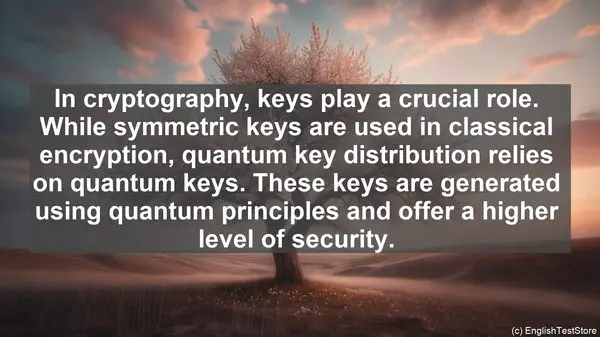Introduction to Quantum Cryptography
Welcome to today’s lesson on the fascinating world of quantum cryptography. As students, it’s crucial to have a strong grasp of the terminology used in this field. In this lesson, we’ll be discussing the top 10 commonly confused words in quantum cryptography.

1. Entanglement vs. Superposition
One of the most fundamental concepts in quantum cryptography is the difference between entanglement and superposition. While both involve the state of particles, entanglement refers to the correlation between two or more particles, whereas superposition refers to a particle existing in multiple states simultaneously.
2. Qubit vs. Bit
Another commonly confused pair of words is qubit and bit. In classical computing, a bit can be either a 0 or a 1. However, in quantum computing, a qubit can exist in a superposition of both 0 and 1, allowing for more complex calculations and parallel processing.

3. Quantum Key Distribution vs. Encryption
When it comes to securing data, we often hear about both quantum key distribution and encryption. While encryption refers to the process of encoding data, quantum key distribution is the method of securely sharing encryption keys using quantum principles, making it highly resistant to eavesdropping.
4. Decoherence vs. Noise
In quantum systems, maintaining coherence is crucial for accurate calculations. Decoherence refers to the loss of this coherence, often due to external factors such as noise. Noise, on the other hand, is any unwanted signal that can disrupt the integrity of the quantum system.
5. Quantum Teleportation vs. Classical Teleportation
While the term ‘teleportation’ might evoke images of science fiction, it’s a real concept in the world of quantum cryptography. Quantum teleportation involves the transfer of quantum states, while classical teleportation refers to the transfer of classical information.
6. Quantum Resistant vs. Quantum Safe
As quantum computers become more powerful, the need for quantum-resistant or quantum-safe algorithms is growing. These algorithms are designed to withstand attacks from quantum computers, ensuring the long-term security of encrypted data.
7. Quantum Channel vs. Classical Channel
When it comes to transmitting information, we have both quantum channels and classical channels. While classical channels transmit classical information, quantum channels are used to transmit quantum states, making them essential for quantum communication.
8. Quantum Key vs. Symmetric Key
In cryptography, keys play a crucial role. While symmetric keys are used in classical encryption, quantum key distribution relies on quantum keys. These keys are generated using quantum principles and offer a higher level of security.
9. Quantum Hacking vs. Classical Hacking
Hacking is a concern in any field of technology. In quantum cryptography, the threat of quantum hacking is a significant concern. Unlike classical hacking, which often involves exploiting vulnerabilities, quantum hacking relies on manipulating quantum states to gain unauthorized access.
10. Quantum Randomness vs. Pseudorandomness
Randomness is crucial in many cryptographic protocols. While pseudorandomness refers to a sequence of numbers that appears random but is actually generated by an algorithm, quantum randomness is truly random, making it ideal for applications that require high levels of unpredictability.
